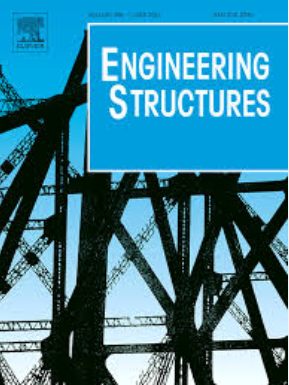Machine learning-based and interpretable models for predicting the resistance and probability of progressive collapse of steel frame-composite floor structures
IF 5.6
1区 工程技术
Q1 ENGINEERING, CIVIL
引用次数: 0
Abstract
Steel frame-composite floor (SF-CF) structures are particularly susceptible to progressive collapse due to their complex load distribution and potential vulnerabilities at critical joints, making them a high-risk system in the event of localized failure. This study aims to investigate the methods for predicting and analyzing the progressive collapse behavior of SF-CF structures. A theoretical and predictive model was developed based on the Minimal Substructure Mechanics Model and the Collapse Probability Prediction Method Based on the Randomness of Structural Load (CPPM-RSL). Machine learning (ML) techniques from artificial intelligence (AI) were employed to predict and analyze the progressive collapse behavior probabilistically. Initially, a dataset comprising various scenarios of column failure was established. The performance of five typical ML models was assessed and compared based on this dataset, focusing on the robustness and generalization capability. Results revealed that the XGBoost model demonstrated inferior performance compared to the other four models, particularly regarding generalization capability. More refined hyperparameter optimization was performed to attempt to improve the performance of the XGBoost model. Grid search was employed to obtain the optimum hyperparameter configuration. K-Fold cross-validation was employed to further examine the generalization capability of the model under the optimal hyperparameter configuration. Additionally, reducing model complexity by decreasing the number of features was also attempted in response to the overfitting observed in the XGBoost model. The results indicated that these approaches did not significantly enhance the performance of the XGBoost model. Moreover, interpretable models based on the Shapley Additive exPlanations (SHAP) method and five ML models were developed. The importance of features in predicting structural collapse and their impact mechanisms were elucidated, providing recommendations to boost the structural resistance to collapse. It was also indicated that the employment of weak learners in XGBoost yields predictive values less than true values despite the obtained values being raised as much as possible in the SHAP values of the XGBoost model. Optimizing the structural geometric characteristics proved to be more effective than improving the properties of material in increasing the collapse resistance of structures. In conclusion, this study attempts to apply ML methods for predicting structural collapse behavior and provides a potential approach for predicting progressive collapse.
求助全文
约1分钟内获得全文
求助全文
来源期刊

Engineering Structures
工程技术-工程:土木
CiteScore
10.20
自引率
14.50%
发文量
1385
审稿时长
67 days
期刊介绍:
Engineering Structures provides a forum for a broad blend of scientific and technical papers to reflect the evolving needs of the structural engineering and structural mechanics communities. Particularly welcome are contributions dealing with applications of structural engineering and mechanics principles in all areas of technology. The journal aspires to a broad and integrated coverage of the effects of dynamic loadings and of the modelling techniques whereby the structural response to these loadings may be computed.
The scope of Engineering Structures encompasses, but is not restricted to, the following areas: infrastructure engineering; earthquake engineering; structure-fluid-soil interaction; wind engineering; fire engineering; blast engineering; structural reliability/stability; life assessment/integrity; structural health monitoring; multi-hazard engineering; structural dynamics; optimization; expert systems; experimental modelling; performance-based design; multiscale analysis; value engineering.
Topics of interest include: tall buildings; innovative structures; environmentally responsive structures; bridges; stadiums; commercial and public buildings; transmission towers; television and telecommunication masts; foldable structures; cooling towers; plates and shells; suspension structures; protective structures; smart structures; nuclear reactors; dams; pressure vessels; pipelines; tunnels.
Engineering Structures also publishes review articles, short communications and discussions, book reviews, and a diary on international events related to any aspect of structural engineering.
 求助内容:
求助内容: 应助结果提醒方式:
应助结果提醒方式:


